It takes real skill to make a film about a desperate Syrian refugee and a dour middle-aged Finn reinventing himself and turn it into the warmest, most life-enhancing film I’ve seen this year. But Aki Kaurismäki has form, he’s been making movies which defy genres – are they absurdist or social realist, tragic or comic? – for 30 years now. His films do well at festivals – The Other Side of Hope won Berlinale's Silver Bear for best director this year – and regularly find their way onto the indie circuit but they never make it in the multiplex: you’ll need to be quick to catch this one on a big screen, which is where it belongs.
There’s some thematic overlap here with Kaurismäki’s most recent film, 2011’s Le Havre, which also featured a refugee finding an unexpected ally in France, but the director is back on home turf here and it's a shade darker - there are encounters with Nordic neo-Nazis and chilly officialdom. Khaled (Sherwan Kaji) has been travelling for months since his home in Aleppo was bombed while his family were having lunch; the only other survivor was his sister, Miriam and he’s lost her in some hellish border camp.
Finding Miriam is his sole reason to live, and he’s been criss-crossing borders searching for her before ending up by mistake on a freighter bound for Finland. Khaled's journey is intercut with the story of Waldemar Wikström (Sakari Kuosmanen) who is also on the run, but from the boredom of marriage and work. There's a lovely deadpan scene where his wife sits in the kitchen, her hair in rollers mimicked visually by the giant cactus on the table, and dumps his discarded wedding ring among the cigarette butts.
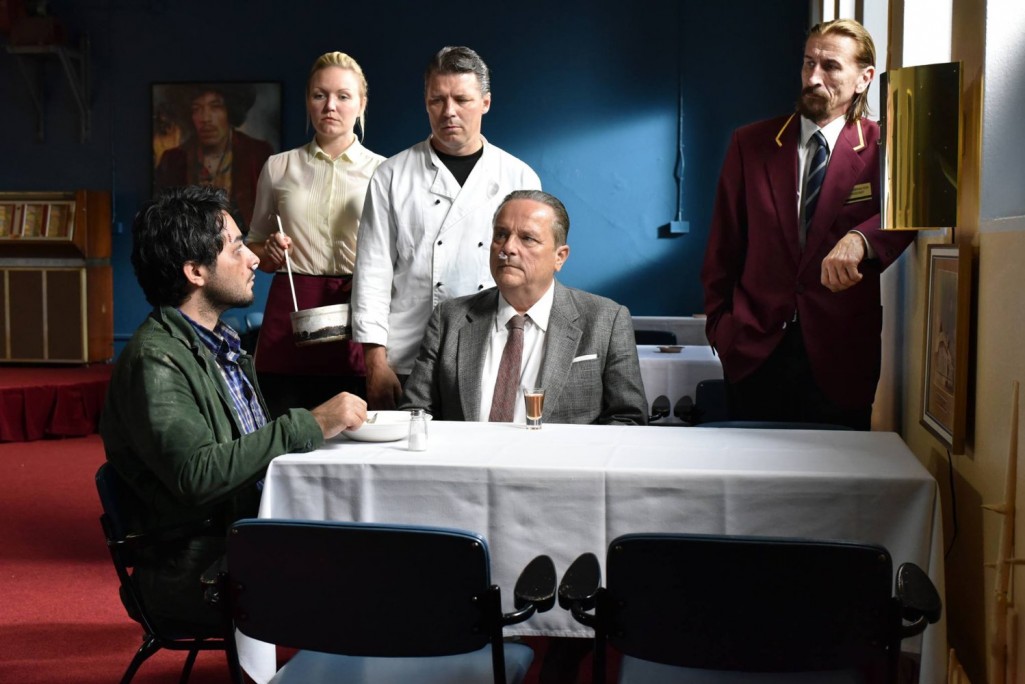 Wikström also jettisons his boring job selling clothes to small outfitters around the country. He flogs off his stock of cellophane-wrapped shirts for a derisory sum and is left with his big old car and a handful of cash. Instead of heading for sunnier climes, he buys a shabby drinkers’ dive, the Golden Pint, where fishballs are always dish of the day. The three surly staff haven’t had their wages paid in months and regard the new owner with suspicion. It's more than an hour into the film before Khaled and Wikström meet, and then it isn't exactly cute – a fight by the restaurants' bins – but a friendship develops.
Wikström also jettisons his boring job selling clothes to small outfitters around the country. He flogs off his stock of cellophane-wrapped shirts for a derisory sum and is left with his big old car and a handful of cash. Instead of heading for sunnier climes, he buys a shabby drinkers’ dive, the Golden Pint, where fishballs are always dish of the day. The three surly staff haven’t had their wages paid in months and regard the new owner with suspicion. It's more than an hour into the film before Khaled and Wikström meet, and then it isn't exactly cute – a fight by the restaurants' bins – but a friendship develops.
Much of the comedy lies in the attempt to reinvent the Golden Pint and bring in more customers with a new menu. Transforming into a sushi restaurant (pictured below) backfires horribly when the cook swiftly runs out of fresh fish and resorts to dolloping lumpy clods of wasabi on rinsed-off pickled herring. Where another director would give you the Japanese diners’ disgusted reaction, Kaurismäki just cuts to them walking politely out of the restaurant at the end of the evening, nodding to the staff dressed in their absurd kimonos. Back to the fishballs.
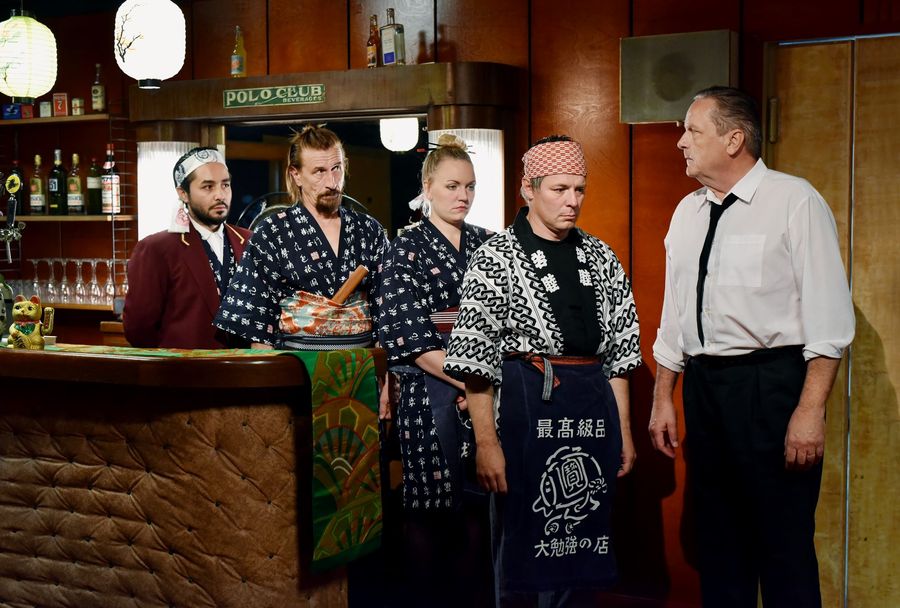 There are many familiar pleasures from the director whose biggest hit was Leningrad Cowboys Go America back in 1989. The Other Side of Hope generously showcases the indigenous bar band circuit of Finland. Who knew that there were still so many hairy Finnish musicians who sound like Dire Straits and sing fabulously miserable songs? And for those mourning Laika, the adorable dog in Le Havre, there is a new dog to provide some winsome comedy at the diner when the health and safety inspectors come to call.
There are many familiar pleasures from the director whose biggest hit was Leningrad Cowboys Go America back in 1989. The Other Side of Hope generously showcases the indigenous bar band circuit of Finland. Who knew that there were still so many hairy Finnish musicians who sound like Dire Straits and sing fabulously miserable songs? And for those mourning Laika, the adorable dog in Le Havre, there is a new dog to provide some winsome comedy at the diner when the health and safety inspectors come to call.
The gently lugubrious humour is matched by superb camerawork (the film is shot on 35mm film by Kaurismäki's longterm cinematographer Timo Salminen). The limited palette and subdued lighting renders every location a glaucous underworld. But this movie isn’t all style and poker-faced comic asides, there’s a really profound humanism in the way the refugees’ stories are told, and a compassion which is all the more impressive for its total lack of sentimentality. Kaurismäki has said that this is his final film; it would be a real shame for him to stop now, but at least he’d be going out on a masterpiece.
Overleaf: watch the official trailer for The Other Side of Hope





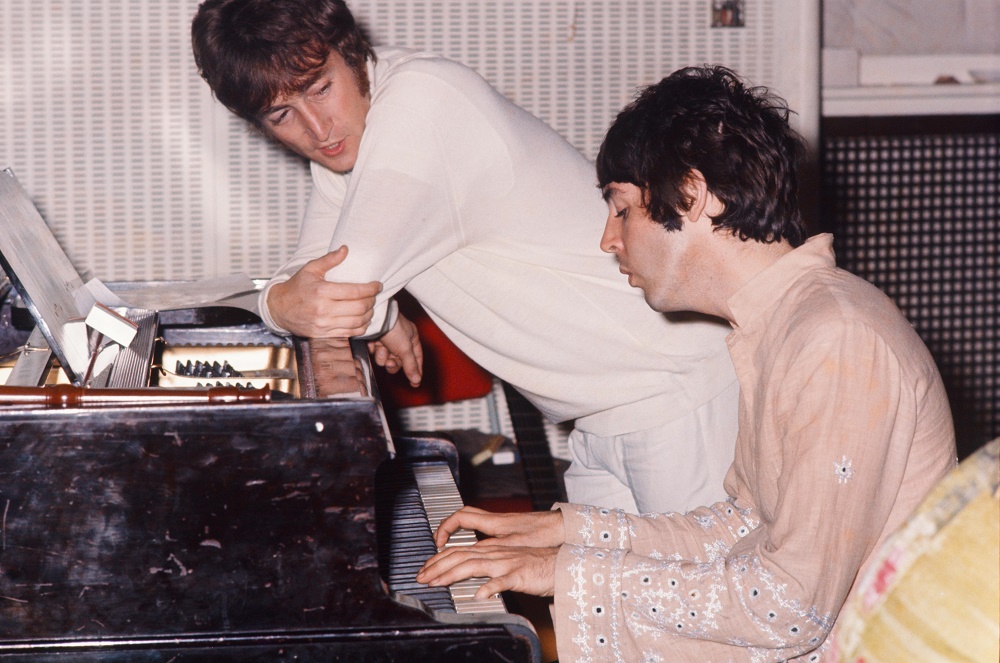 Unfortunately, that is a legacy downside of the group’s global reach: Apple Corps, representing the interests of Paul McCartney, Ringo Starr and the estates of John Lennon and George Harrison, will – putting it simply – just say no to anyone seeking to broadcast or exploit Beatles originals in the public domain, unless four parts are in total agreement and involved. So it was that, by contrast, Ron Howard last year stole a march on Alan G. Parker, maker of this new film, by having – with the help of producer George Martin’s son Giles and presumably Apple – original live sound in Eight Days A Week, about the touring years, as well as new spoken contributions from McCartney and Starr. Neither appears in It Was Years Fifty Ago Today! Who does?
Unfortunately, that is a legacy downside of the group’s global reach: Apple Corps, representing the interests of Paul McCartney, Ringo Starr and the estates of John Lennon and George Harrison, will – putting it simply – just say no to anyone seeking to broadcast or exploit Beatles originals in the public domain, unless four parts are in total agreement and involved. So it was that, by contrast, Ron Howard last year stole a march on Alan G. Parker, maker of this new film, by having – with the help of producer George Martin’s son Giles and presumably Apple – original live sound in Eight Days A Week, about the touring years, as well as new spoken contributions from McCartney and Starr. Neither appears in It Was Years Fifty Ago Today! Who does? This is the frame for Parker’s film: historical, cultural, anecdotal. Analysis of the Pepper music is of necessity skimpy, as the film gives us in that respect nothing to listen to. Useful and largely articulate talk comes from well-known Beatles commentators such as biographers Philip Norman and Hunter Davies and journalist Ray Connolly, and from – until now – relative unknowns such as Barbara O’Donnell, who worked for manager Brian Epstein, and Jenny Boyd, sister of Harrison’s first wife Pattie, coming across still as a cut-glass 1960s charmer. Rather sweetly, a groomed, smiling, 75-year-old Pete Best, sacked as drummer in 1962, has some screen-time to praise his three long-lost friends, though this is inessential as of course he had nothing to do with Pepper or, indeed, the recorded legacy.
This is the frame for Parker’s film: historical, cultural, anecdotal. Analysis of the Pepper music is of necessity skimpy, as the film gives us in that respect nothing to listen to. Useful and largely articulate talk comes from well-known Beatles commentators such as biographers Philip Norman and Hunter Davies and journalist Ray Connolly, and from – until now – relative unknowns such as Barbara O’Donnell, who worked for manager Brian Epstein, and Jenny Boyd, sister of Harrison’s first wife Pattie, coming across still as a cut-glass 1960s charmer. Rather sweetly, a groomed, smiling, 75-year-old Pete Best, sacked as drummer in 1962, has some screen-time to praise his three long-lost friends, though this is inessential as of course he had nothing to do with Pepper or, indeed, the recorded legacy.
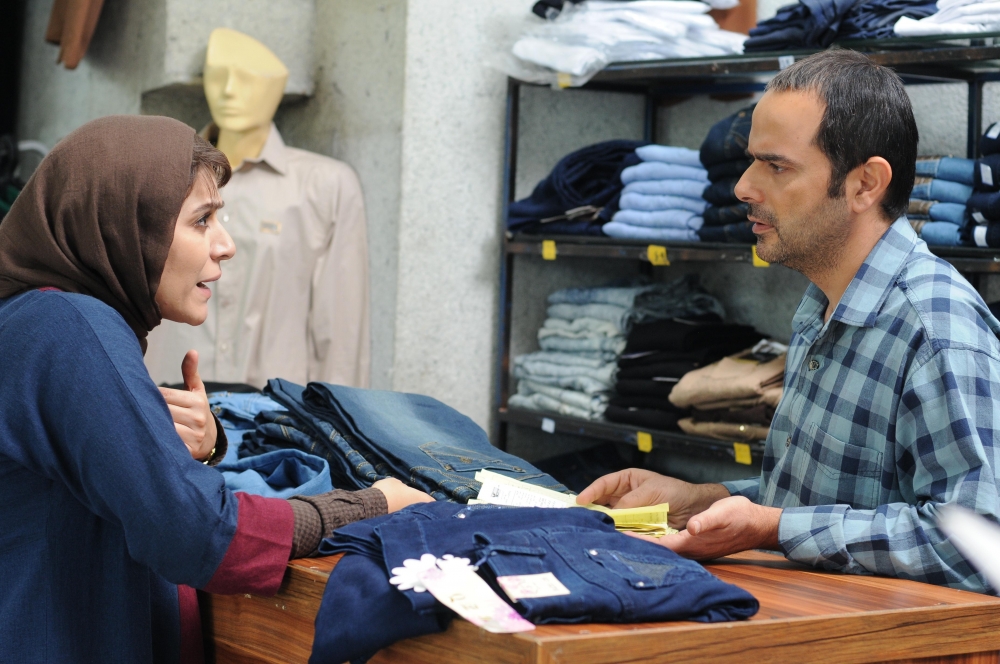 When the inevitable happens, and Mahin ends up in hospital, all that looks set to change. The doctor’s prognosis is uncompromising: Mahin must leave Tehran, or the consequences will be fatal. There isn’t so much a family conclave, as a decision, without discussion, by the two married siblings that Niloofar will accompany her, leaving her life and work in Tehran behind. “No husband, no children, so I don’t count?” is her retort, as the family encounters become increasingly confrontational (not least when her brother simply shuts her out of her work premises, to pay off his own debts). The older sister sees it as no less of a transaction: in return for going with the mother, Niloofar will receive an allowance. (Sahar Dolatshahi with Ali Mosaffa, playing her brother, pictured above)
When the inevitable happens, and Mahin ends up in hospital, all that looks set to change. The doctor’s prognosis is uncompromising: Mahin must leave Tehran, or the consequences will be fatal. There isn’t so much a family conclave, as a decision, without discussion, by the two married siblings that Niloofar will accompany her, leaving her life and work in Tehran behind. “No husband, no children, so I don’t count?” is her retort, as the family encounters become increasingly confrontational (not least when her brother simply shuts her out of her work premises, to pay off his own debts). The older sister sees it as no less of a transaction: in return for going with the mother, Niloofar will receive an allowance. (Sahar Dolatshahi with Ali Mosaffa, playing her brother, pictured above) The elements of drama are strong, and give the film’s closely observed scenes – even when a touch of melodrama slips in, Inversion is still very much a work of realism – their power. It premiered at Cannes last year in the “Un Certain Regard” programme, and the quality of the acting impresses profoundly. Dolatshahi has a paradoxical combination of composure and vulnerability, and her face captivates the camera: she’s matched by the utterly natural Hosseini, the youngest presence on the screen, as well as by the scheming siblings, unsympathetic but still somehow understandable. Such a keen definition of character more than compensates for a budget we assume was modest. (Romantic interest: Sahar Dolatshahi with Ali Reza Aghakhani, pictured above)
The elements of drama are strong, and give the film’s closely observed scenes – even when a touch of melodrama slips in, Inversion is still very much a work of realism – their power. It premiered at Cannes last year in the “Un Certain Regard” programme, and the quality of the acting impresses profoundly. Dolatshahi has a paradoxical combination of composure and vulnerability, and her face captivates the camera: she’s matched by the utterly natural Hosseini, the youngest presence on the screen, as well as by the scheming siblings, unsympathetic but still somehow understandable. Such a keen definition of character more than compensates for a budget we assume was modest. (Romantic interest: Sahar Dolatshahi with Ali Reza Aghakhani, pictured above)
 We begin at max. vol. in Camelot, a bristling castle deep in the digitised heart of soundstageland where Uther Pendragon (Eric Bana) is ousted by his black-hearted sibling Vortigern (
We begin at max. vol. in Camelot, a bristling castle deep in the digitised heart of soundstageland where Uther Pendragon (Eric Bana) is ousted by his black-hearted sibling Vortigern (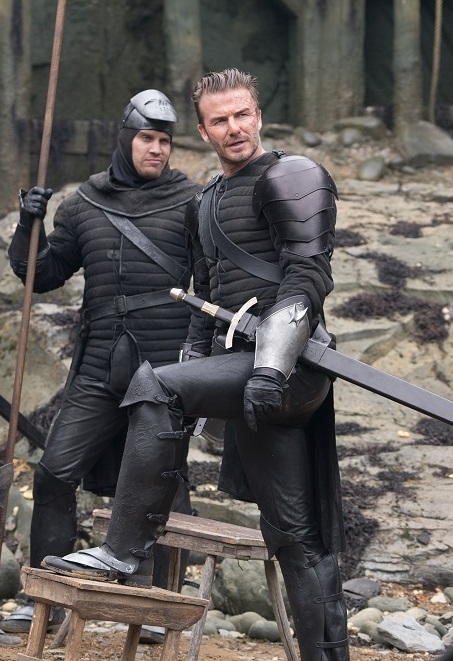 To be fair, that goes for everyone else in King Arthur: Legend of the Sword. Arfur falls in with a lairy cohort on secondment from the Two Smoking Barrels visitor experience. They're lads called Arthurian things like Goosefat Bill, Wet Stick, Mischief John. You can randomly generate these idiot names. Bob Cobblers, Perry Pliars, Def Geoffrey, Burkina Fatso, Sid Skidmark, Kung Fu Trev, “The Jizza”, Handjob Hannan, Strong and Stable Nige, David Beckham (yes he’s actually in it, pictured: Vinnie Jones can sleep easy).
To be fair, that goes for everyone else in King Arthur: Legend of the Sword. Arfur falls in with a lairy cohort on secondment from the Two Smoking Barrels visitor experience. They're lads called Arthurian things like Goosefat Bill, Wet Stick, Mischief John. You can randomly generate these idiot names. Bob Cobblers, Perry Pliars, Def Geoffrey, Burkina Fatso, Sid Skidmark, Kung Fu Trev, “The Jizza”, Handjob Hannan, Strong and Stable Nige, David Beckham (yes he’s actually in it, pictured: Vinnie Jones can sleep easy).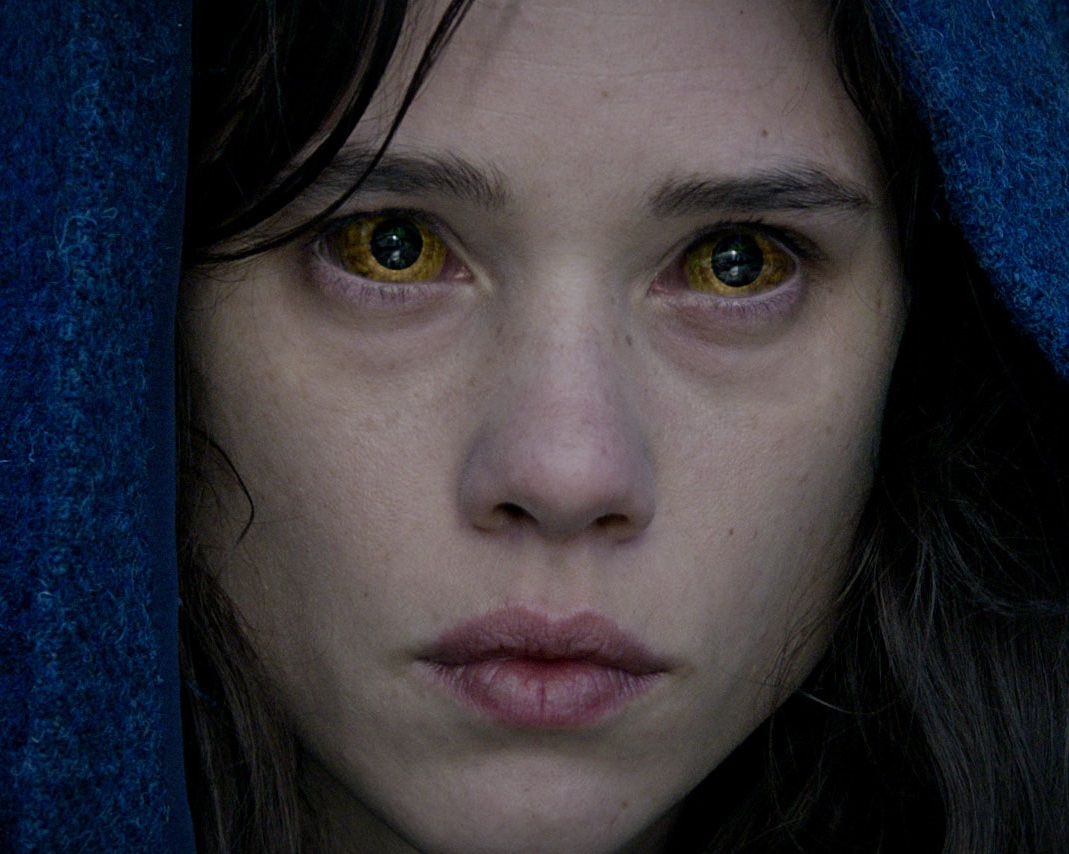 Action comedy is the trickiest of hybrids. Ritchie goes at it with a unfit-for-purpose toolkit of mallets, ping-pong bats and one phallusy broadsword. When the script’s not being clever-clever or funny-funny it’s being stupid-stupid. Enormo-pachyderms, one jumbo basilisk and a three-headed lady octopus all continue cinema’s galloping mania for gigantism (see also Kong: Skull Island and Jurassic World). The plot, meanwhile, is a botched origami.
Action comedy is the trickiest of hybrids. Ritchie goes at it with a unfit-for-purpose toolkit of mallets, ping-pong bats and one phallusy broadsword. When the script’s not being clever-clever or funny-funny it’s being stupid-stupid. Enormo-pachyderms, one jumbo basilisk and a three-headed lady octopus all continue cinema’s galloping mania for gigantism (see also Kong: Skull Island and Jurassic World). The plot, meanwhile, is a botched origami.
 The central question is whether or not young Rose killed her newborn child with a rock, an act of infanticide which Mara denies early on as piano chords come crashing down around her. Her ageing, shining-eyed self hoves into view in the form of a gravely arresting Redgrave (pictured above) who, it turns out, herself plays a mean piano. Alas, it seems that Rose will soon have to find fresh musical environs given that the mental health hospital to which she has been confined is being turned into a spa hotel. (Frankly, I would just ask to stay on.) At which point, cue a strapping psychologist (Eric Bana) on hand to reassess Rose and to peruse the diaries that allow for the parallel structure that ensues. Guess what: he likes Beethoven, too.
The central question is whether or not young Rose killed her newborn child with a rock, an act of infanticide which Mara denies early on as piano chords come crashing down around her. Her ageing, shining-eyed self hoves into view in the form of a gravely arresting Redgrave (pictured above) who, it turns out, herself plays a mean piano. Alas, it seems that Rose will soon have to find fresh musical environs given that the mental health hospital to which she has been confined is being turned into a spa hotel. (Frankly, I would just ask to stay on.) At which point, cue a strapping psychologist (Eric Bana) on hand to reassess Rose and to peruse the diaries that allow for the parallel structure that ensues. Guess what: he likes Beethoven, too. 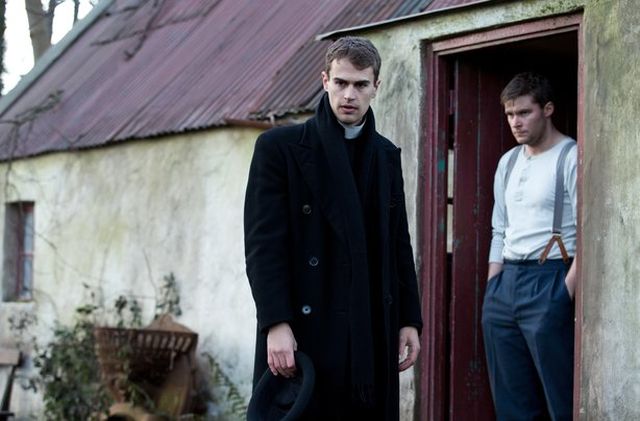 Rose's youth, it seems, consisted of parrying or at least juggling the advances of a motley crew of suitors, played by an array of modern-day celluloid "it boys", among them Theo James and a largely sidelined Aidan Turner. While an implacable Mara suggests a waitress wanting merely to get on with her business, these men have other ideas, though quite how James (pictured right with Jack Reynor) references being "a priest who wants to be a man" while keeping a straight face is an achievement worth pondering. In any case, gossipy, small-town village life bodes ill for the romance that develops between Rose and an RAF pilot, Michael (Reynor), whose arrival sets the cat among the politically riven pigeons. Small wonder that the Book of Job gets an onscreen workout, the so-called "secret scripture" of the title.
Rose's youth, it seems, consisted of parrying or at least juggling the advances of a motley crew of suitors, played by an array of modern-day celluloid "it boys", among them Theo James and a largely sidelined Aidan Turner. While an implacable Mara suggests a waitress wanting merely to get on with her business, these men have other ideas, though quite how James (pictured right with Jack Reynor) references being "a priest who wants to be a man" while keeping a straight face is an achievement worth pondering. In any case, gossipy, small-town village life bodes ill for the romance that develops between Rose and an RAF pilot, Michael (Reynor), whose arrival sets the cat among the politically riven pigeons. Small wonder that the Book of Job gets an onscreen workout, the so-called "secret scripture" of the title. 
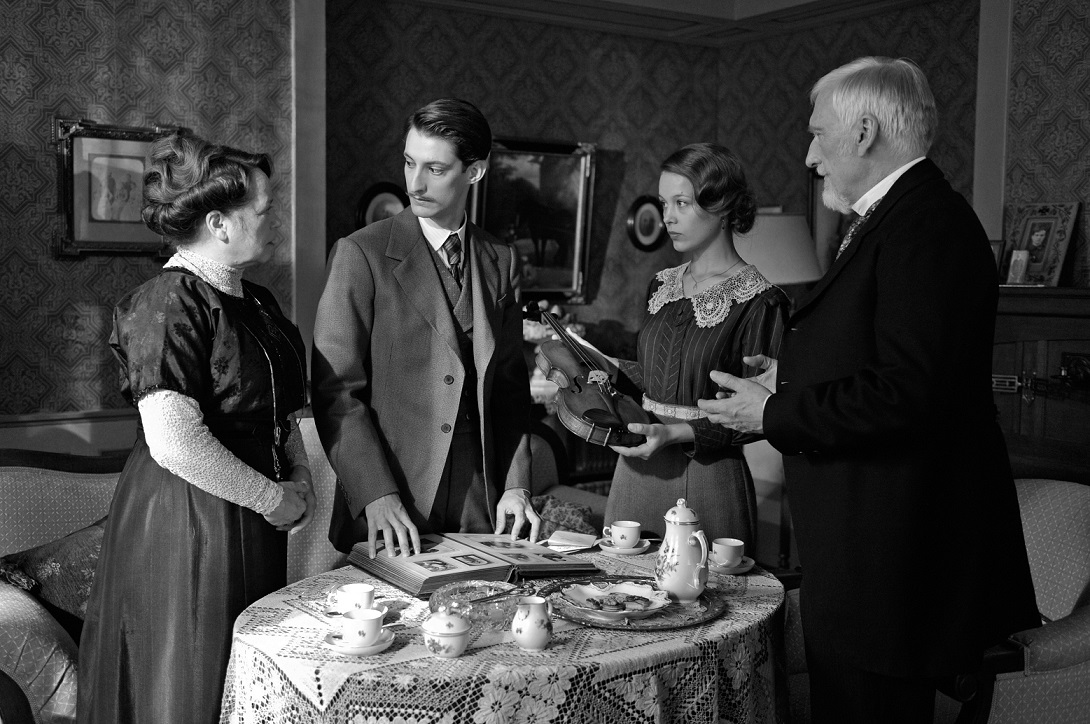 But such foundations for any possible future will not withstand life’s harsher truths. Revealing them would be impossible, since Ozon is himself a storyteller who here, especially, plays with our expectations. He confounds (for those who know themes from the rest of his work) some of those on one level, and allows the visual reality of his film to flesh out a story that is itself illusory. Anna’s complicity in maintaining that version of events precipitates her journey to France in the second half (at which point Ozon leaves Lubitsch behind).
But such foundations for any possible future will not withstand life’s harsher truths. Revealing them would be impossible, since Ozon is himself a storyteller who here, especially, plays with our expectations. He confounds (for those who know themes from the rest of his work) some of those on one level, and allows the visual reality of his film to flesh out a story that is itself illusory. Anna’s complicity in maintaining that version of events precipitates her journey to France in the second half (at which point Ozon leaves Lubitsch behind).
